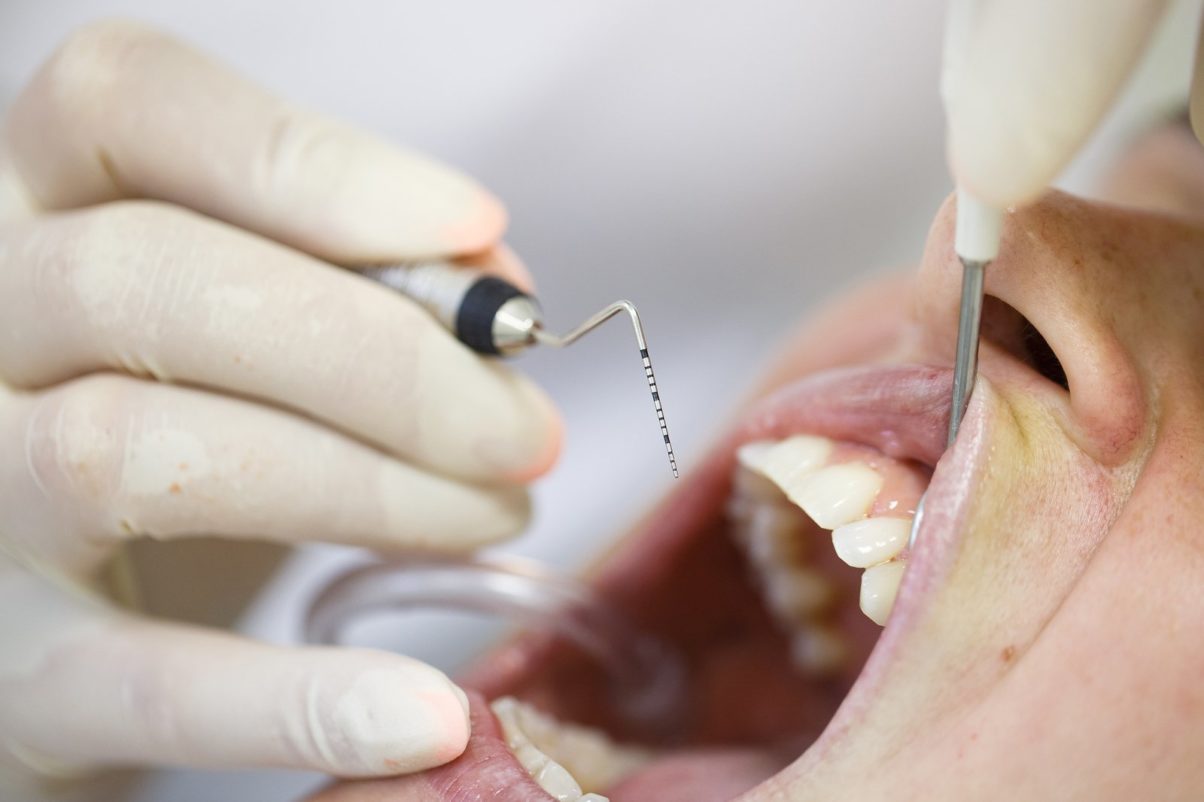Although gum therapy might sound like something you get after an especially sticky or sugary meal; it’s actually a professional procedure performed by a dental hygienist. Here’s what goes into gum therapy, along with information on why you might need it.
Who Needs Gum Therapy?
Also known as scaling and root planing or a deep cleaning, gum therapy treats the area beneath the gumline when signs of gum disease are present. According to the American Dental Association, gum disease commonly affects patients who don’t do a good enough job eliminating plaque from their teeth. Plaque is constantly forming on every person’s teeth; however, when it is allowed to proliferate unchecked, it can cause the gums to get inflamed. When this occurs, gum tissue begins to pull away from teeth and create tiny pockets which trap bacteria inside.
If left untreated, these pockets can lead to progressive periodontal disease that can ultimately cause tooth and bone loss. If minor gum disease is caught in time, a professional teeth cleaning may be enough to keep it from damaging structures below the gum line. If pockets have already begun to form, however, your dentist may recommend gum therapy.
How Does Gum Therapy Work?
During a dental appointment, your dentist will use a probe instrument to check for pocketing within the gums. According to the National Institute of Dental and Craniofacial Research (NIDCR), healthy pockets will be no greater than 3 millimeters deep; if your pockets exceed 5 millimeters, however, your dentist might recommend gum therapy.
This procedure involves eliminating plaque and tartar from the teeth and pockets below the gumline. The hygienist will perform the deep cleaning using manual scaling tools and/or electric or ultrasonic instruments. The hygienist will also perform a root planing procedure, which involves smoothing out your teeth roots to encourage your gums to reaffix to your teeth.
Your gum therapy will usually require at least two visits, and a follow-up visit may be necessary to check pocket depth and make sure your gums and teeth are getting healthier.
Keeping Your Teeth and Gums Healthy
After your gum therapy cleaning, it’s important to prevent recurrence by brushing your teeth twice a day with an electric toothbrush or a soft-bristled toothbrush. You will also want to floss regularly and eat a healthy, balanced diet rich in fruits and vegetables. You should also avoid tobacco products and limit your use of alcohol. It’s important to maintain regular checkups with your dentist to keep your teeth clean and to watch for potential signs of new pocket formation. This is especially important since early intervention can help you avoid having to get more gum therapy in the future.



 Previous Article
Previous Article